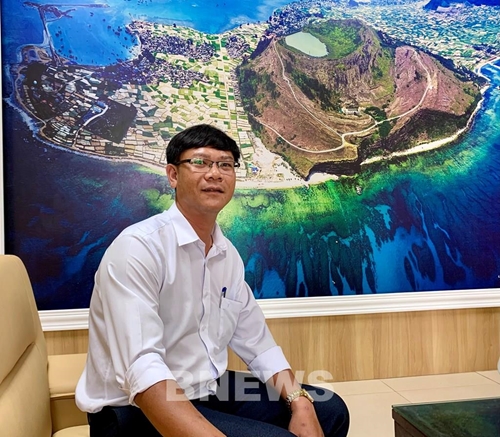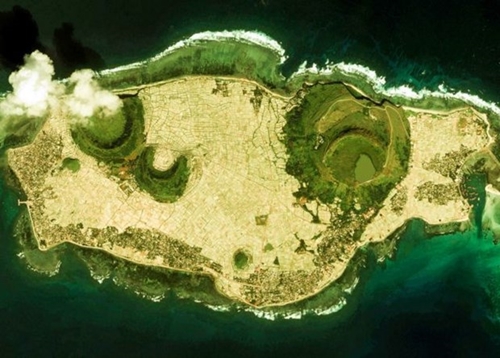    |
 |
|
Dang Tan Thanh, Vice Chairman of the Ly Son People’s Committee (Photo: bnews.vn) |
According to Thanh, the local economic structure is shifting towards sustainability and a larger proportion of the trade - service sector. The tourism sector has been earmarked for breakthrough development, becoming a key economic sector in Ly Son.
The district has targeted to raise the share of the tourism-service sector in the local economy to 60%, while agriculture will account for 30-35%, and industry-handicraft the remaining 5-10%. The authorities plan to focus on completing the district's development master plan, which will serve as the basis to attract investment over the next five years.
To this end, the locality has built a new central market, and developed diverse and affordable homestay network, dining, and transport services meeting the demand of both locals and tourists to the island.
It is now making efforts to tap its tourism potential by conserving local relics, creating spiritual tourism products, promoting historical and scenic sites as well as protecting the environment with the construction of a waste treatment plant.
    |
 |
|
An bird's eye view of Ly Son Islands, off the coast of Quang Ngai province (Photo courtesy of Bui Thanh Trung) |
Ly Son Islands, which were naturally formed over millions of years, are an outpost of the country’s defence and security in the East Sea (South China Sea). They have cemented the country’s sovereignty over the sea and islands including the Truong Sa (Spratly) and Hoang Sa (Paracel) archipelagos.
The islands still hold the annual “Le khao le the linh Hoang Sa” (Feast and Commemoration Festival for Hoang Sa Soldiers), recognized as an intangible cultural heritage, that has been observed for hundreds of years by local fishing families.
The festival pays tribute to local men who enlisted in the Hoang Sa Flotilla. This group was organized to patrol the Hoang Sa and Truong Sa archipelagos in order to mine resources and defend the nation's sovereignty over the territorial waters.
Centuries-old houses are still preserved on the islands, as is Am Linh Pagoda, built to worship the souls of sailors who died during long, regular patrols of Hoang Sa and Truong Sa Islands in the Nguyen Dynasty (in the 17th century).
Source: VNA